What Does Iso Mean On A Digital Camera
The International Organization for Standardization
The acronym ISO itself is a reference to the International System for Standardization. However this organization does far more than than define camera sensitivities, it promotes universal standards for measurements of all different types, on an international level.
Fun fact: Instead of calling themselves the IOS, the title "ISO" is in reference to isos, (ίσος) which means "equal".
Previously, film sensitivity was also measured a similar fashion by another organization, the ASA or American Standards Clan. This has been superseded by ISO in modern times, just the measurement itself and the calibration remain finer the same.
Film ISO vs. Digital ISO
For moving picture photography, ISO or ASA (American Standards Associations) speed refers to the motion picture speed of the film roll. Typically, when you are shooting outdoors on a sunny day, you volition be using an ISO100 or ISO200 film. If you're shooting indoors, you lot would probably switch to an ISO800 film or faster. What's hard, of grade, is if you lot have to go from an outdoor to indoor location rapidly, because that unremarkably means that you lot would either have to change the roll of moving-picture show or compensate with your discontinuity or shutter speed.

Not bad affair virtually digital photography is that you can change your ISO speed on the wing, making it easy to transition betwixt exterior and interior shots. On top of that, yous can actually view on the LCD screen how your image looks in that particular ISO.
How ISO Affects Image Quality and Noise
In both motion-picture show and digital photography, the higher the ISO, the more than grain you'll have in the image. In digital photography, noise is the by-production of the increased electric charge needed to make the sensor more sensitive to calorie-free and looks like speckles on the image. The effect of more dissonance, however, is a rougher-looking image and a subtract in image quality.
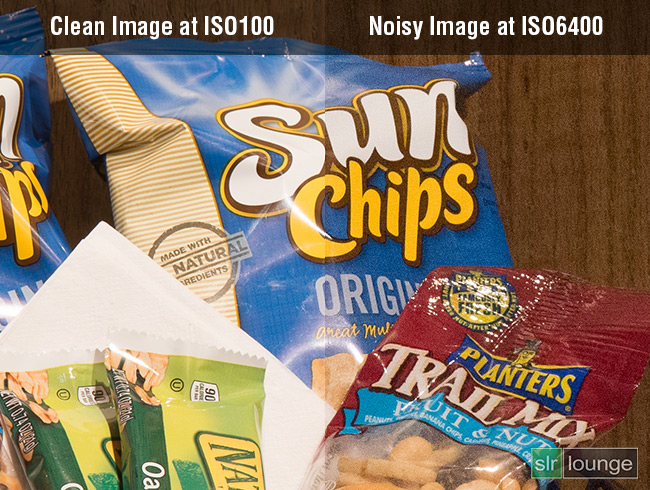
Luminance Noise vs Blush Noise
There are two types of racket, luminance noise, and chroma noise. Luminance racket retains much of the original color considering this type of noise only affects the brightness of the pixels. Chroma noise, on the other hand, looks like colored speckles or grain, and is largely unattractive. This is considering the noise is affecting the color of the pixels rather than just the effulgence of the pixels. Luckily, post-processing software like Lightroom does a practiced job in minimizing chroma noise.

Unlike cameras accept different thresholds on when this noise starts to degrade the epitome quality. This is known equally the signal-to-noise ratio. There are several factors that determine point-to-noise ratio. Aside from the processor of the camera, the megapixel count and the size of the sensor play a role in how well a camera can minimize noise.
How a Camera's Megapixels and Sensor Size Affects ISO
The size of the sensor and the corporeality of pixels on that sensor directly affects the potential amount of dissonance that can occur when yous are shooting at higher ISOs. Imagine that a sensor is like a pond pool and the pixels are the amount of beach balls that can float in that puddle. If y'all only have 100 assurance, you can fit larger size balls in the pool. If you want to fit 1,000 balls, you would either have to have a larger pond pool or employ smaller balls. That is essentially the same relationship with pixel count and sensor size.
A sensor is made up of millions of tiny lite-gathering receptors called pixels. One megapixel (MP) consists of one one thousand thousand pixels. If you take two aforementioned size sensors and one has 12MP and the other has 24MP, the 12MP sensor can have larger pixels than the 24MP sensor. The larger the pixel size, the better that pixel is in gathering light, just like the larger the beach ball, the more air it can concord. If you want to increment the number of pixels from 12MP to 24MP without decreasing the pixel size, and then you would take to increase the physical sensor size. This is like having a larger swimming puddle to agree more beach balls without decreasing the size of the balls. The size of the pixel in relation to the sensor size is known as the pixel pitch and is measured in microns.
So as yous increase your ISO, you lot will showtime to get noise at a lower ISOs with a compact camera than with a larger sensor DSLR. A compact camera image tin can look noisy at ISO800, whereas a full-frame DSLR image can take fiddling to no racket all the mode upwards to ISO3200.
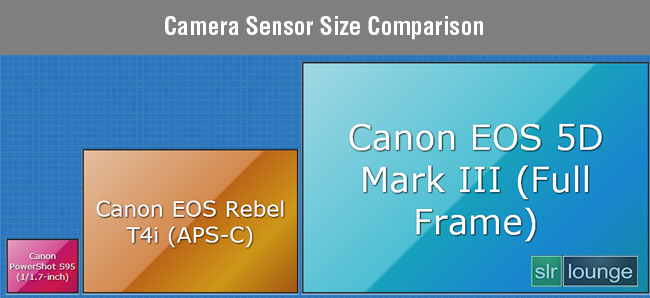
Recommended ISO for Different Scenarios
Here are some recommendations of what ISO to use in different lighting conditions.
• Outdoors with sunny skies: ISO 100-200
• Outdoors with overcast, sunrise and dusk: ISO 200-400
• Well lit interior: ISO 400-800
• Semi-lit interior: ISO 800-1600
• Nightime exterior or dimly lit interior: ISO 1600-6400
• Indoor or nighttime sports: ISO 1600-8000
The other factors that will determine which ISO to use is what shutter speed and aperture combination that you want to use. If you are shooting fast moving subjects that require a fast shutter speed of 1/500th sec or faster, yous take to recoup for exposure by either opening upward your discontinuity or increasing your ISO. Using a lens that is "fast" or has a big maximum aperture like f/1.8 allows you lot to shoot in a lower ISO as opposed to if you lot are using a lens with a maximum aperture of f/2.8.
Sometimes, you lot have no choice but to increase the ISO. This is peculiarly true for shooting events like a wedding ceremony reception where you want to accept a fast plenty shutter speed to make sure your subjects are not blurry.
Additionally, if yous want to use a smaller aperture, like f/16, to increase the depth of field for landscape photography, you besides have to compensate for exposure past either using a slower shutter speed or increasing your ISO.
Now, if you place your camera on a tripod and you're shooting mural or the metropolis skyline, then you tin can shoot during the solar day or night without having to change your ISO. All you have to practise is wearisome downwards your shutter speed until you lot take the right exposure.
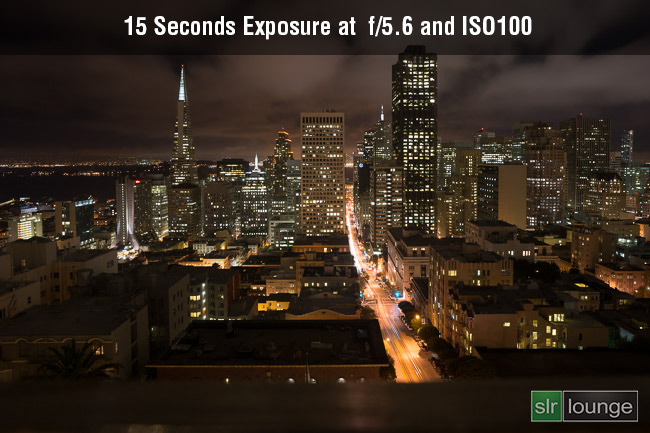
How Exactly Is ISO Measured?
The style ISO is measured, by the International Organization for Standardization itself, (ISO 12232:2006) is simply a specific level of brightness or exposure.
This brightness level is, visually, 18% grey. Does this mean that ISO 100, 200, 400, and others all corresponds to stock-still brightness levels, such as lumens or EV? Unfortunately the answer is NO, in the real earth. In every mode that ISO is referenced on charts and graphs, information technology is merely used every bit a corresponding brightness based on your shutter speed and aperture.
For example: ISO 100, 1 second, and f/1.0 correspond to the fixed brightness "EV 0". However, that aforementioned effulgence level could besides be achieved at ISO 200, 1/2 2nd, and f/i.0, or ISO 400, 1/4 second, and f/1.0. Or y'all could modify both your aperture and your shutter speed at the aforementioned fourth dimension, and use any ISO setting you lot desire, yet still be able to make it at the same final EV brightness of eighteen% grayness.
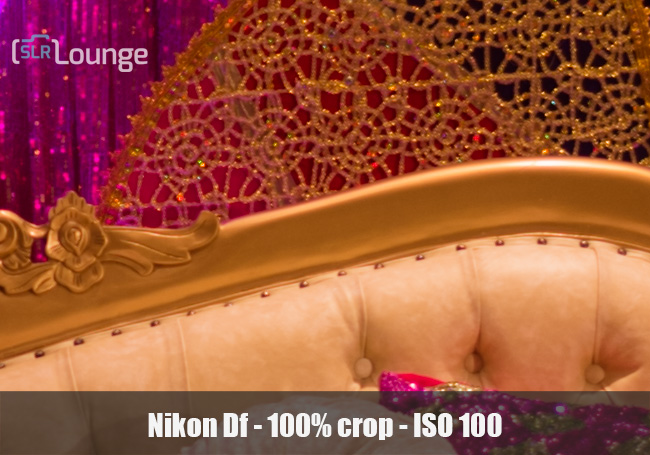
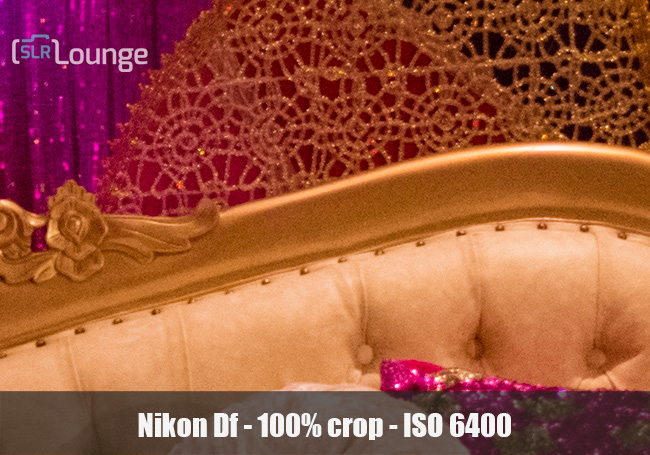
Common Misconceptions and FAQs well-nigh ISO
Are higher digital ISOs really more than sensitive?
Ane common mistake that photographers make is how they draw the way ISO works on digital cameras. For instance, when the ISO is raised from 100 to 200, that sensor is not actually condign more than sensitive to calorie-free. In other words, it is not really collecting more photons than it was before. The sensor is collecting photons the same mode, however it is amplifying the betoken that these photons are creating on the sensor. This does not mean that shooting at higher ISOs is pointless, of course, for numerous reasons. For more information, see the High ISO Definition.
Actual ISO versus stated ISO
In theory, on all camera sensors, as well as all films, ISO settings should be exactly the same. Each camera that uses ISO 100, for example, should receive exactly the same effulgence of exposure. (Assuming identical shutter speeds and apertures.)
Unfortunately, not all camera sensors achieve such precision, and some digital cameras are actually slightly more sensitive or less sensitive to light. In other words, ISO 400 may actually behave like ISO 300 on a certain photographic camera, for example. Generally speaking these discrepancies are no larger than 1/three or 1/5 of a stop or EV, withal.
Determination
So to recap, the ISO rating refers to the light sensitivity rating of a sensor. The dominion of thumb is to shoot at the lowest ISO possible given the lighting status and shutter speed/aperture combination that you are using. The higher the ISO, the more racket creeps into your images, so if you tin get away with using a lower ISO, so exercise so.
Sensor size and megapixel count also affects how before long noise will start to pitter-patter into an prototype as yous increase the ISO. A 12MP meaty-camera sensor will be a lot noisier at ISO1000 than a 24MP full-frame sensor. Typically, a higher-end camera does a amend job in controlling noise at the higher ISO range than a lower-finish camera.
Finally, information technology's important that, although yous may have to apply a higher ISO to get a shot in low-calorie-free, it is amend to use that higher ISO and take more noise than to not get the shot at all or to have too much motion blur from too slow of a shutter speed.
Do | Understanding ISO

Accept an image at your camera's everyman ISO and some other image with the same composition at your camera's highest ISO, changing only the shutter speed to keep the exposures the exact aforementioned.
Detect the difference in image quality between the ii images. If you tin't see the difference in-camera, import your images to your computer and look at them side-past-side.
Source: https://www.slrlounge.com/glossary/iso-definition-photography/
Posted by: etheridgethersen.blogspot.com


0 Response to "What Does Iso Mean On A Digital Camera"
Post a Comment